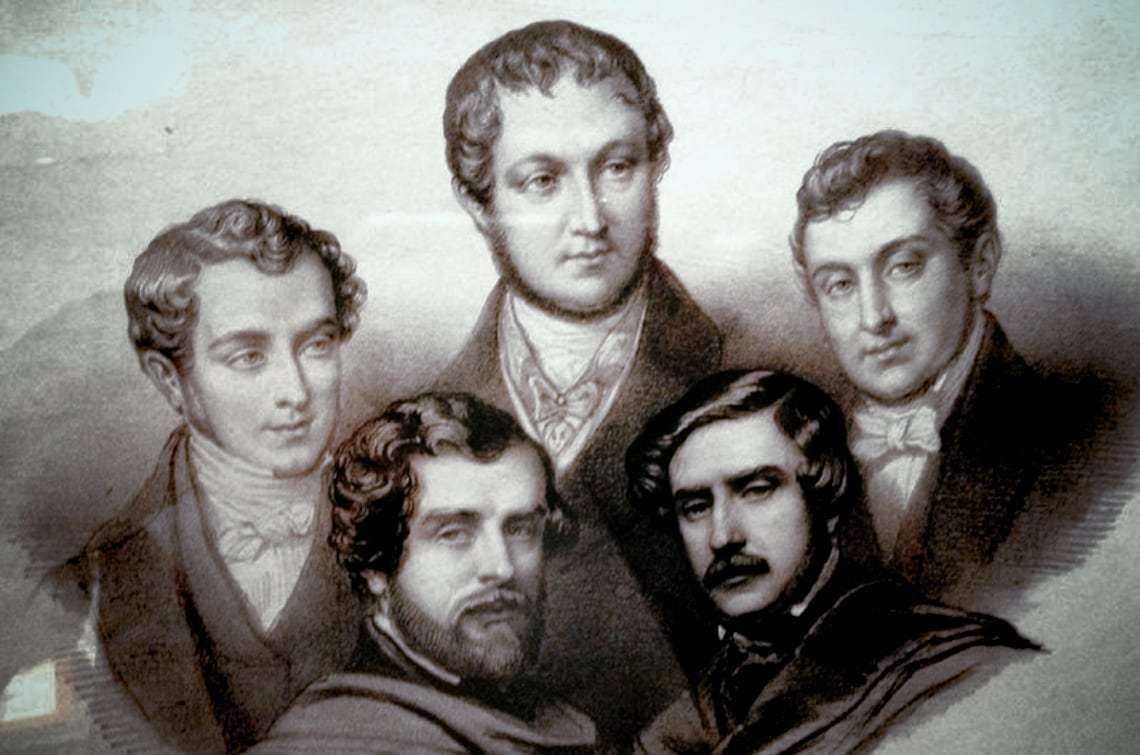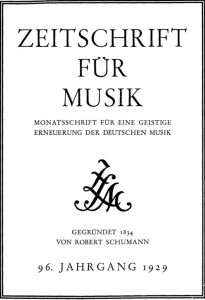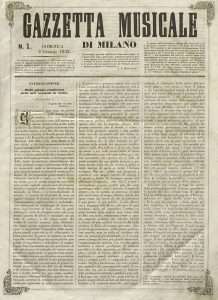
The figure of the music critic: let’s start from its origins.
When were the figure of the music and vocal critic born?
The phenomenon of vocal criticism, and with it the figure of the critic, has recent origins. The organization of discourses on music (as old as civilization), in the sector that gravitates around music journalism and which takes the form of reviews, reports, news on executions, and so on, began in the eighteenth century with the birth of a press specialized on whose pages have written musicologists, musicians, writers and journalists whose activity has since been recognized as criticism.
The musical and vocal critic of the origins is a musician himself or a man of letters: he is therefore placed among the professionals and intellectuals.

Schumann founds a musical criticism expressed in the name of romanticism, aimed at broadening the horizons of music and the truth that it can transmit to the heart and mind. To this end, he chooses prose rich in images and metaphors, periphrases, and high registers, resorting to idioms and aphorisms, thus linking music criticism to literature in a very close way. In short, it inaugurates a “creative” critical language that seeks to place itself in parallel with the creative act itself, to reveal the essence of the work and the reasons that led the author to express himself in that way.
What is the difference between the music critic of the past and that of today?
It is important to note a significant difference between the figure of the music critic at the origins and that of today. Being a critic in Schumann’s time meant, rather than expressing oneself about the performance of repertoire pieces, considering the novelties, and often discovering and promoting new authors of the calibre of Chopin, Berlioz, and Brahms, among those that Schumann himself, with his criticisms helped to “launch”. In short, the critic was primarily concerned with new music and emerging musicians, a task which, at least as far as classical music is concerned, is no longer among the main ones today.
Furthermore, since the record market did not yet exist and the critic’s activity, even if it was carried out in specialized magazines, was not linked to journalism but remained an expression of critics who, in turn, were artists, the criticism had an exquisitely cultural sense of analysis. Pure.
The original critic, a refined intellectual, very often also a musician, thus found himself fulfilling the double and contradictory function of educator and diffuser of taste, but also of guarantor of the eliteness of music.
In the nineteenth century, publications dedicated to the voice also spread in Italy, in which criticism played an important role. Many articles dedicated to voice and music also appeared in miscellaneous magazines, often organized in unique columns. These publications contributed significantly to the emergence of a new musical culture, directing the ways of enjoying music, in short, playing that pedagogical role that, as will be seen better later, contemporary criticism is losing.
What were the examples of press linked to music criticism?

What emerges even from a quick observation is that the original Italian music and vocal critic tends to be a man of letters.. Generally, this type of critic offers chronicle accounts embellished with personal observations accompanied by a beautiful style, witty and sensitive comments, which go beyond an in-depth discourse concerning, for example, the historical, biographical, aesthetic, theoretical and technical implications relating to the works represented and their authors.
To give some illustrious examples, we can cite Michele Leoni from Parma, poet and playwright who worked as a critic for the Florentine literary and scientific periodical “Antologia”; Tommaso Locatelli, who dealt with criticism on the “Gazzetta di Venezia” and the dishevelled writer Giuseppe Rovani who edited the musical chronicle in the “Gazzetta di Milano” and collaborated on “L’Italia musica”.
An example of a miscellaneous newspaper that made use (for the musical part) of the contribution of valid writers, we cite the Venetian “Il Gondoliere, newspaper of pleasant conversation”, which came out from 1833 to 1848, attesting itself as “one of the most valid Venetian periodicals, especially for the musical and operatic topics covered.
The emergence of the practice of vocal criticism goes hand in hand, in Italy, with the popularity of opera music and the construction of new theatres to host it, in many Italian cities, from the largest to the smallest. It is no coincidence that the first specialized newspapers, born around the middle of the century, are mainly dedicated to opera: among these, the “Gazzetta musica di Milano”, published by Ricordi, which began publishing in 1842; “L’Italia Musicale: newspaper of theatres, literature, fine arts and variety”, another Milanese periodical (1847-1859); the “Gazzetta musica di Napoli” (from 1852); the “Gazzetta musica di Firenze” (from 1853); the Florentine “L’Armonia: organ of musical reform in Italy: a journal of sciences, literature, arts, theatres, concerts and variety shows” (1856-1859).
In the second half of the nineteenth century, a process of professionalization of criticism began, which corresponds to a greater development of the same due above all to the aforementioned factor of the great success of the opera. In this regard, we should note that while in other European countries, following the Romantic Revolution, the compositional commitment was concentrated on the intensification of the expressiveness and freedom of instrumental music, which also met the favour of the public, in Italy, the musical interest was focused entirely on melodrama, no longer just a worldly entertainment based on the virtuosity of the singers, but a work in which to identify and participate intensely, in an atmosphere of growing passions that closely touched the experience of the spectators.
On this basis, which is centred on opera, several valuable music journalists emerge whose main activity is precisely criticism. Among these, Alessandro Biaggi, who was also a composer but who devoted himself above all to teaching music and collaborating as a vocal critic with various newspapers, including “Gazzetta d’Italia”, “Gazzetta del Popolo”, “Nuova Antologia “,” Gazzetta musica di Milano “,” The Independent “,” The Nation “. Biaggi carried out an in-depth critical discourse on the rejection of the Wagnerian model, questioned the state of music in Italy, and underlined the need to contextualize music historically.
In the first half of the twentieth century, the profession of the critic was attested and consolidated. This is the most fruitful period for Italian criticism, full of great names, including Luigi Ronga, Guido Pannain, Andrea Della Corte, and many others.
To understand the seriousness with which vocal criticism was taken into consideration in this period, we can read the motivation with which the president of the commission of the national prize of the Accademia dei Lincei for art and poetry criticism, Vincenzo Arangio-Ruiz , proposed Ronga for the awarding of the prize in 1957, which he later won. Arangio-Ruiz stated that he had achieved critical results of the first order, demonstrating a shrewd methodological awareness of a vast knowledge of his subject.
Bibliography and notes:
- On critical Schumann, see Rattalino P.,Introduzione a Schumann R., Gli scritti critici, Unicopli, Milano, 1991.
- Capra M., Periodici e critica musicale tra Ottocento e Novecento: dal “Censore universale dei teatri” alla “Rassegna musicale”, in M. Capra, F. Nicolodi (a cura di), La critica musicale in Italia nella prima metà del Novecento, Marsilio, Venezia, Casa della Musica, Parma, 2011, p. 13
- Rattalino P., Letterati e musica nell’Ottocento italiano, “Terzo Programma”, 1972. It should be noted that in Italy, the tendency to write about music on the part of men of letters also continued in the twentieth century: think of writers such as Massimo Bontempelli and Alberto Savinio and of the poet Eugenio Montale, who, from 1954 to 1967 worked as a music critic for the “Corriere d ‘Information”.
- Capra M., Periodici e critica musicale tra Ottocento e Novecento: dal “Censore universale dei teatri” alla “Rassegna musicale”, cit., p. 14.
- About the Rovani’s activity of music critic see: Tordi, R., Il manto di Lindoro. Rovani e il teatro d’opera, Bulzoni, Roma, 1995
- See Capra M., La stampa ritrovata: duecento anni di periodici musicali, in A. Rigolli (a cura di), La divulgazione musicale in Italia oggi, EDT, Torino, 2005.
- Fiaccadori C.., Per Aldo Noseda: il critico musicale, “Acme”, 1-2, 2013, pp.139-176: 142.
Read also the article: Yalda Yazdani racconta il canto libero afghano al femminile

